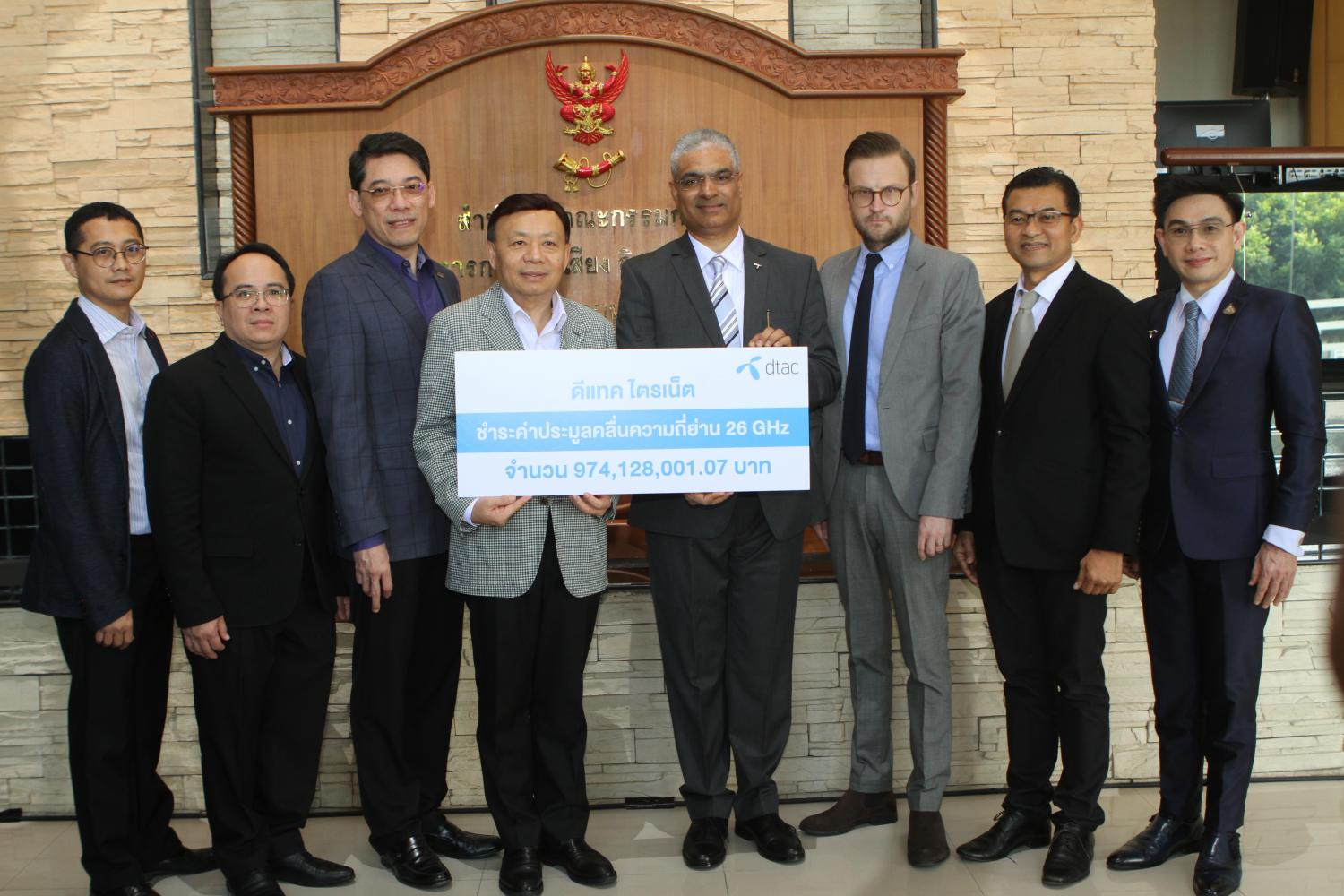Total Access Communication (DTAC) yesterday received licences for the 26-gigahertz range ahead of the other winning bidders from the Feb 16 auction, with the third-largest mobile operator aiming to deliver 5G service in selected locations in the second quarter of 2020.
DTAC's 26GHz band will add to DTAC's existing mid- and low-band ranges to give all customers improved coverage and up to three-times-higher data capacity, said DTAC chief executive Sharad Mehrotra.
DTAC is also upgrading its existing network through a combination of high-speed massive MIMO technology and 3,400 additional 4G-TDD sites on the 2300-megahertz network under a partnership with state telecom enterprise TOT.
The company handed over a cheque for 974 million baht to the National Broadcasting and Telecommunications Commission (NBTC) last Friday for two licences on the 26GHz range. Each licence contains 100MHz of bandwidth.
Mr Mehrotra said earlier that the acquisition of the two slots was in line with the company's strategy.
The two slots on the 26GHz range are adjacent to the 28GHz range, which is compatible with devices and platforms in accordance with the global 5G standard. This makes it easier for DTAC to introduce 5G service.
Although Advanced Info Service (AIS) and True Move H Universal Communication (TUC) won 12 and eight licences respectively on the 26GHz range, the spectrum slots they hold cannot be used for 5G service right away, since development of compatible devices and equipment on the 26GHz band is a work in progress.
The upshot is that the two slots won by DTAC came with higher winning prices than those won by other operators.
Despite holding less spectrum bandwidth than its two bigger rivals, DTAC has vowed to launch a home-based ultra-high-speed broadband service on 26GHz, delivering fibre-like speeds of up to one gigabit per second in selected locations.
"Acquiring 5G spectrum is just the start of the journey, with much more to come every quarter this year," Mr Mehrotra said.
The unique features of the 26GHz band include ultra-high speeds and ultra-high capacity for a wide range of 5G service applications that require almost instantaneous delivery of large amounts of data, such as high-resolution virtual (or augmented) reality, high-speed internet for large crowds and remote health services.

